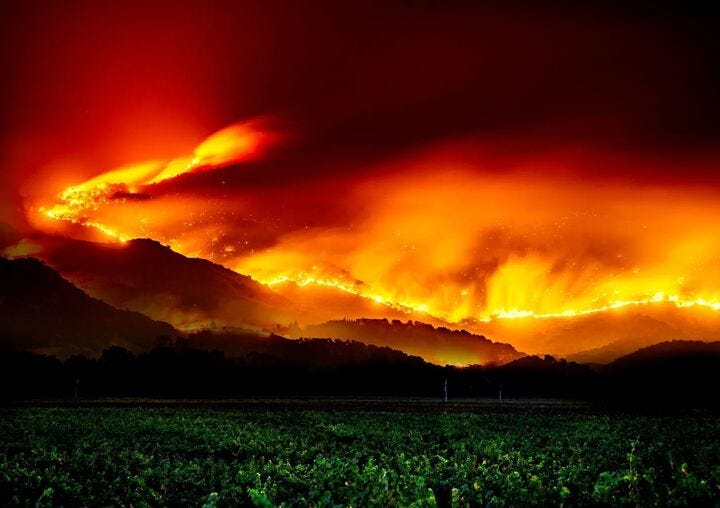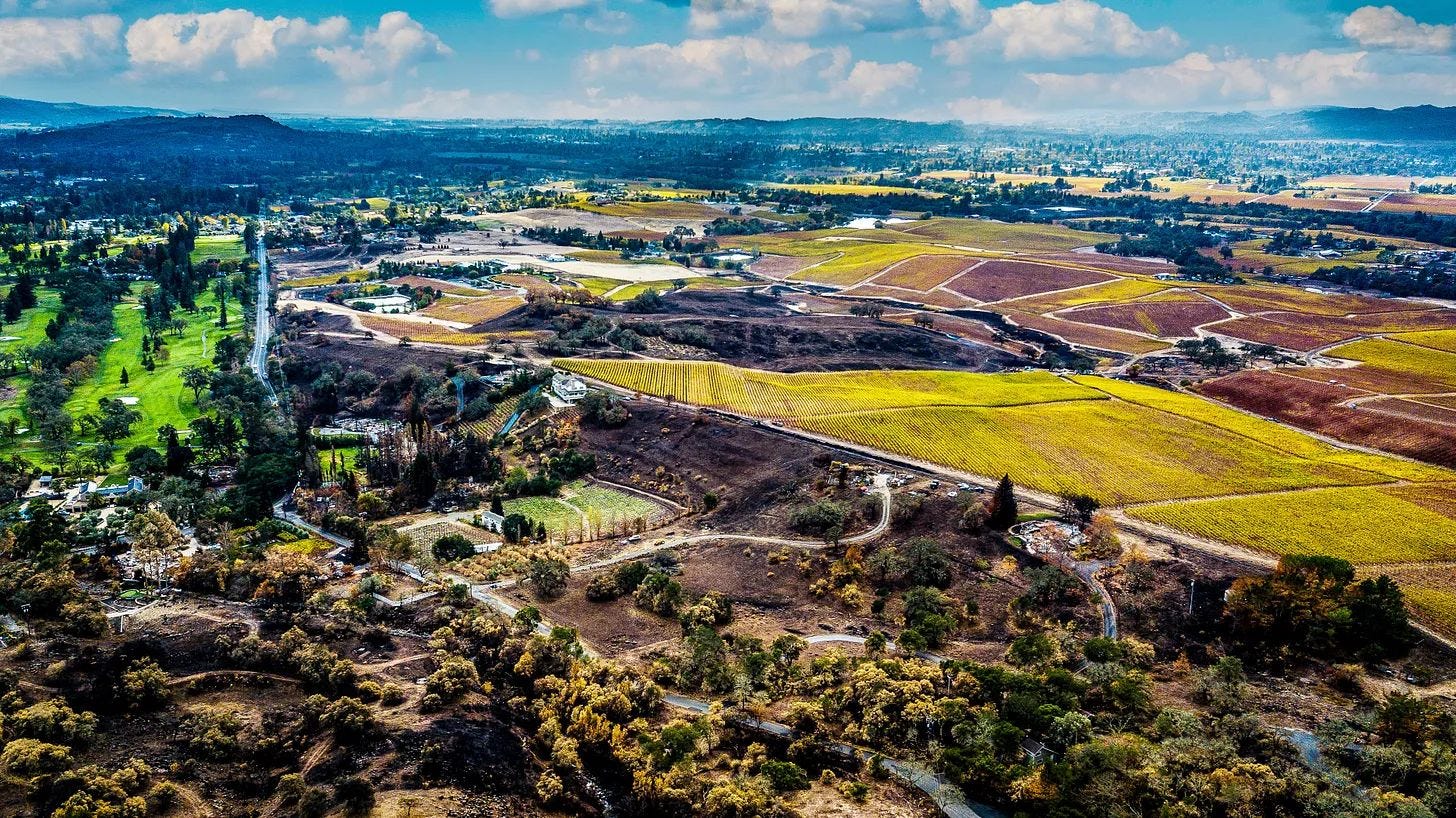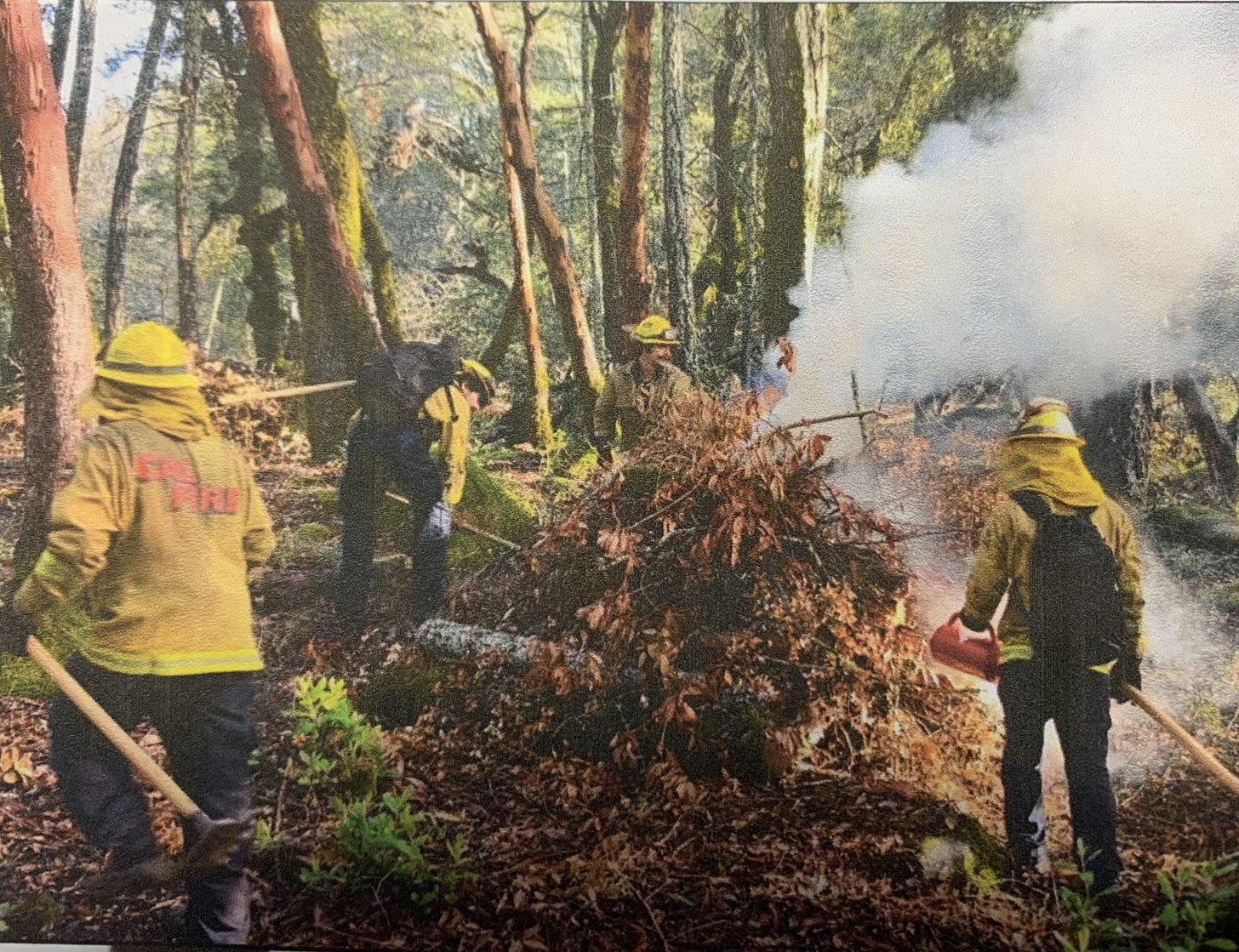Year-end report: Collaborative efforts increase wildfire resiliency
By Dave Stoneberg
NAPA COUNTY, Calif. — In the last two years the weather has been moderate and wildfires have been relatively tame in California. Only about 651,000 acres were burned in 2022-23. Compare that to 2020-21, when wildfires scorched 10 times that much, or 6.8 million acres, even though the number of fires was roughly the same.
In 2020, CalFire responded to 8,648 fires that burned 4.3 million acres, including Napa County’s Glass Fire that burned more than 67,000 acres and destroyed 1,555 buildings that included 308 homes and 31 wineries, restaurants and lodges. The wildfire wasn’t contained for 23 days. No deaths or injuries were reported.
In the wake of that fire, along with the August 2020 LNU Lightning Complex fire that burned 363,220 acres across five counties (Napa, Solano, Lake, Sonoma and Yolo), something had to be done. In that year, a collaborative effort began that developed a countywide Community Wildfire Protection Plan, the first one of its kind in the state, said County Deputy Fire Chief Jason Martin. Its purpose is to minimize the impact of fires on a large scale.
The County-wide CWPP was authored by the NCFF (Napa Communities Firewise Foundation), with several stakeholders that its members assembled. It was funded by a grant NCFF wrote through CalFIRE. Collaborators include the Sonoma/Lake/Napa CalFire unit, the Napa County Fire Department, the County of Napa and its Board of Supervisors, community members and two important partners, the Napa Valley Vintners and the Napa Valley Grapegrowers.
In a recent year-end address to the Napa County Board of Supervisors, Martin summed up the progress that’s been made since 2020 in a number of areas:
-Requests for chipping
-Defensible space inspections
-Acres treated for shaded fuel breaks
- Roadside clearing miles
-Strategic bulldozer miles
-Grazed acres
Additionally, Martin talked about the money spent on fuels reduction ($20.2 million in three years), not including an additional $1.096 million spent on reducing fuel on 244 acres in the Pacific Union College forest, a program to provide free address signs through six Fire Safe Councils, a program to share costs for property owners to create defensible spaces and public education.
The work being done at PUC is primarily being done by a grant from CalFIRE, called the “Forest Health Grant.” This grant was supported by the NCFF with other members of the PUC staff.
In four years (2020 through 2023), more than 4,200 requests for chipping were completed with 386,708 cubic yards chipped through this free program. Martin said the program is a success in part because of messages to the public about the program. Chipping reduces fuel, which slows wildfires from spreading. The requests for chipping came from throughout the county, including in the Angwin and Dry Creek-Lokota areas, two targets of the program.
In 2020, the fire marshal’s office completed 900 defensible space inspections. As word of this program spread, the inspections increased. In this year 2,522 inspections were completed. Nearly 7,700 inspections were done in the four years. Martin called the program a great success. It includes a legal document, a certificate stating the property inspected met the benchmarks for defensible space.
“Napa is the first county in the state to provide the certificate,” Martin said, adding that “Napa is the first in many of these things.”
During the inspections, property owners are given information on how best to accomplish defensible space, and a plan is developed. Martin’s plans are to enhance and grow the inspection program, which enhances fire resiliency throughout the county.
Another effort to reduce fuel loads is the program’s shaded fuel breaks, where crews go onto a forested property and clean up downed and dead trees and other debris. In three years the crews have treated 1,270 acres, which includes 633 acres in 2023.
Also in three years crews have cleared 219 roadside miles, which is the fire department’s top priority in order to make sure roadways are open for emergency crews. In 2023, 134 miles were treated, compared to 10 miles in 2021. Martin said the plan is to continue and improve the program. A related effort is maintaining and clearing miles of bulldozer trails. This year, bulldozers cleared 69 miles, compared to four miles in 2022 and none the year before. Maintaining the bulldozer trails that have been cut before creates a break in the land and can help stop a wildfire from spreading. Martin said the progress in 2023 was thanks to a generous grant from the Napa Valley Vintners.
Finally, goats were left to graze on land to cut down the fuel load. In 2023 – the first year of the program – they covered 353 acres. Martin said the effort is ongoing and “will become one of the norms we see throughout the valley.”
The figures cited by Martin for the acres treated for shaded fuel breaks, roadside clearing, and grazing were all performed by the NCFF and its vendors, with funding from both the county and grants that NCFF authored and secured. Additionally, the bulldozer work was funded by the Napa Valley Vintners and is being managed by the NCFF, with strategic input from Napa County Fire Department.

In Napa County, six Fire Safe Council Communities received 1,187 address signs, costing $27,732.87. The six councils were Diamond Mountain, Angwin, Spring Mountain, Coombsville/Wild Horse Valley, Calistoga and Pope Valley Estates.
Christopher Thompson, NCFF board chairman, said he personally went out to get funding for the “reflect to protect” address signs. The project was managed by NCFF’s Vice President Piper Cole, and the funding was originally from Bank of The West, not from Napa County. The NCFF supports all the efforts of its FSC’s and stands up new FSC’s. Originally there were eight FSC’s just after the 2017 fires, to now almost 30.
The NCFF was a “named partner” in the FEMA grants that it participated in crafting along with the county, that has been awarded to the county.
In 2023, 320 properties participated in a cost-share program to create Firewise Defensible Spaces. The property owners spent $307,754, and a third of that — $100,683 — was returned to them.
Martin’s PowerPoint presentation listed seven items under Public Education, which he said is one of the priorities of the program. They are:
-Wildfire Resource Fair with the Napa Valley Vintners and Napa County Grapegrowers
-Wildfire Summit hosted by the Napa Valley Community Foundation
-Fire Preparedness Fairs with the Napa County Board of Supervisors
-Angwin, Deer Park and Pope Valley Community Meeting
-Public events, including Engine Days, which is one of CalFire’s most popular events
-Fire Safe Council meetings
-Town Hall meetings
Other highlights include increased field staffing levels, i.e., the CalFire stations don’t close in the winter and Angwin’s Station 30 was reopened, thanks to funding from the Board of Supervisors; AI fire cameras; and a fuel-mapper application, which allows people to put in their address and the app tells them how to reduce fuel loads in their property.
Martin also praised the outreach with their partners, whose efforts have been “incredible,” he said, specifically mentioning Cyril Chappellet on Pritchard Hill for reducing fuel loads in and around their vineyards.
Largest Napa County fires since 2015
- LNU Lightning Complex, 363,220 acres, Aug. 17, 2020
- County Fire, 90,000 acres, June 3, 2018
- Glass Fire, 67,484 acres, Sept. 27, 2020
- Atlas LNU complex, 51,624 acres, Oct. 9, 2017
- Nuns, LNU complex, 44,573 acres, Oct. 9, 2017
- Tubbs, LNU complex, 36,807 acres, Oct. 8, 2017
- Jerusalem Fire, 25,118 acres, Aug. 9, 2015
Information from CalFire website, https://www.fire.ca.gov/incidents
Dave Stoneberg is an editor and journalist who has worked for newspapers in both Lake and Napa counties.






Dave, good timely article. Defensible space to save structures is obviously a good thing. However, more effort needs to be done in the thousands of acres of Napa wildlands. Wildfires in the wildlands create smoke taint on wine grapes which is devastating. We need to reduce the fuel load in the wildlands. I believe that grazing is the answer. For that to be accomplished we need fences and water.